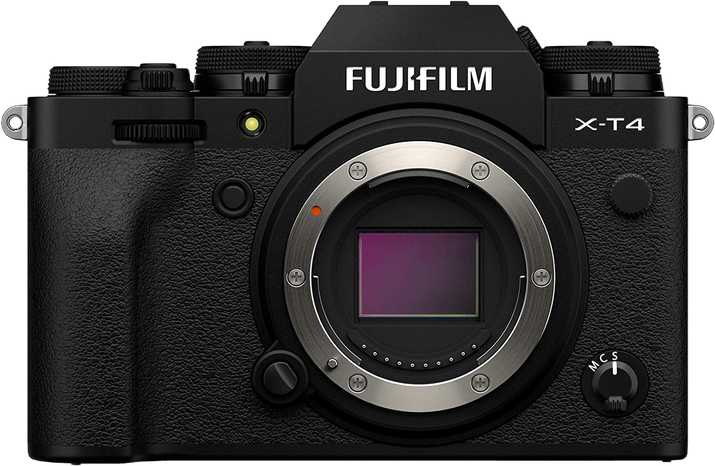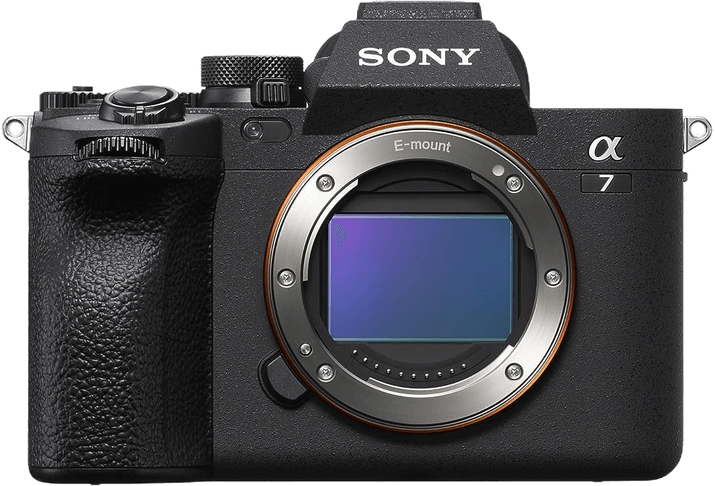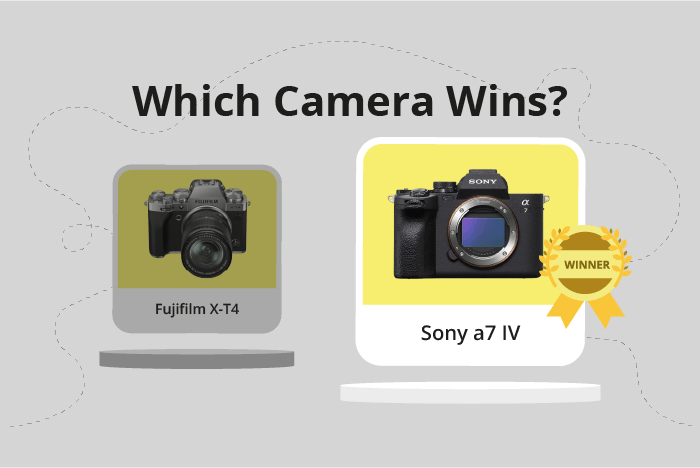Fujifilm X-T4 vs Sony a7 IV Comparison
Fujifilm X-T4

Sony a7 IV

The Sony a7 IV outperforms the Fujifilm X-T4 with a score of 84/100 compared to the latter’s 76/100. Both cameras are mirrorless and were released in 2020 and 2021, respectively. They share similarities in size, with the X-T4 measuring 135 x 93 x 84mm and the a7 IV at 131 x 96 x 80mm. However, the Sony a7 IV is slightly heavier at 659g, while the Fujifilm X-T4 weighs 607g.
The Sony a7 IV’s higher score reflects its superior performance, but it comes with a steeper launch price of $2499 compared to the X-T4’s $1699. Despite the price difference, the a7 IV offers better features, justifying its higher score. On the other hand, the Fujifilm X-T4 is a more budget-friendly option without compromising too much on quality.
Considering the scores, specifications, and price, the Sony a7 IV is the better choice for those seeking top-notch performance, while the Fujifilm X-T4 is ideal for users balancing quality and affordability.
Fujifilm X-T4 vs Sony a7 IV Overview and Optics
The Sony a7 IV takes the lead in the optics comparison with a score of 85/100, while the Fujifilm X-T4 scores 73/100. Both cameras share some common specifications, such as CMOS sensor type, image stabilisation, and their lens mounts – Fujifilm X for the X-T4 and Sony FE for the a7 IV.
The Sony a7 IV outperforms the Fujifilm X-T4 in some key areas. It has a higher megapixel count (33 vs 26), which results in more detailed images. The a7 IV also boasts a full-frame sensor, giving it an edge in low light performance and dynamic range compared to the X-T4’s APS-C sensor. Additionally, the a7 IV has a DXOMARK sensor score of 97, showcasing its superior image quality. The X-T4 lacks a DXOMARK score as Fujifilm cameras are not evaluated by the platform. The Bionz XR processor in the a7 IV provides faster image processing and better noise reduction than the X-Processor 4 in the X-T4.
However, the Fujifilm X-T4 has an advantage in shooting speed, offering 20 frames per second (fps) compared to the Sony a7 IV’s 10 fps. This makes the X-T4 more suitable for fast-paced action and sports photography.
Taking these factors into account, the Sony a7 IV is the better choice for photographers seeking higher image quality and low light performance, thanks to its full-frame sensor, higher megapixel count, and superior processor. On the other hand, the Fujifilm X-T4 is a strong contender for those who prioritize shooting speed for capturing fast-moving subjects.
Fujifilm X-T4 vs Sony a7 IV Video Performance
The Fujifilm X-T4 and Sony a7 IV both have a video score of 91/100, indicating a tie in their video capabilities. Both cameras have 4K video resolution, a maximum video frame rate of 120fps, and built-in time-lapse functionality. These shared specifications make them strong contenders for videographers and filmmakers alike.
The Fujifilm X-T4 edges out the Sony a7 IV in terms of maximum video dimensions, offering 4096 x 2160 pixels compared to the Sony a7 IV’s 3840 x 2160 pixels. This difference means that the X-T4 delivers a slightly wider aspect ratio, which may appeal to those seeking a more cinematic look in their footage. The wider dimensions provide extra flexibility in post-production for cropping or reframing shots without losing image quality.
On the other hand, the Sony a7 IV still maintains a strong position despite its slightly smaller video dimensions. It matches the X-T4 in terms of frame rate and time-lapse functionality, ensuring that users will not miss out on any crucial video features. The a7 IV’s video quality remains impressive and suitable for a wide range of applications.
Both the Fujifilm X-T4 and Sony a7 IV excel in their video capabilities, with the X-T4 having a slight advantage in video dimensions. However, this advantage may not be significant enough to sway potential buyers, as both cameras offer an outstanding set of video features. Ultimately, the choice between these two cameras will likely come down to personal preferences and brand loyalty, as their video performance is nearly equal.
Fujifilm X-T4 vs Sony a7 IV Features and Benefits
The Fujifilm X-T4 wins the features comparison with a score of 85/100, while the Sony a7 IV scores 83/100. Both cameras share several specifications, including a 3-inch screen size, touchscreen functionality, flip screen, lack of GPS, and the presence of WIFI and Bluetooth connectivity.
The Fujifilm X-T4 outperforms the Sony a7 IV in screen resolution, offering 1,620,000 dots compared to the a7 IV’s 1,040,000 dots. This higher resolution provides a clearer and sharper display, enhancing the user experience when composing shots and reviewing images.
On the other hand, the Sony a7 IV holds its ground with an equal screen size, flip screen, and touchscreen capabilities, ensuring that users have a similar level of convenience and control when shooting. Additionally, both cameras lack GPS but compensate with WIFI and Bluetooth connectivity, allowing for easy sharing and remote control of the cameras.
Despite the close scores, the Fujifilm X-T4’s superior screen resolution sets it apart from the Sony a7 IV, making it the better choice for photographers who prioritize image clarity and quality on their camera’s display. Meanwhile, the Sony a7 IV remains a strong contender with its comparable features and connectivity options, ensuring that users will not be disappointed in their choice of camera.
Fujifilm X-T4 vs Sony a7 IV Storage and Battery
The Sony a7 IV wins the storage and battery comparison with a score of 76/100, while the Fujifilm X-T4 scores 73/100. Both cameras have two memory card slots and offer USB charging. They differ in memory cards accepted and battery life.
The a7 IV accepts CFexpress Type A and SD (UHS-II compatible) cards, providing faster read and write speeds. Its battery life is longer with 580 shots, using the NP-FZ100 battery. These advantages make the Sony a7 IV a better choice for extended shooting sessions and faster data transfer.
The Fujifilm X-T4, on the other hand, accepts SD, SDHC, and SDXC cards (UHS-II compatible), which are more common and affordable. Its battery life is shorter with 500 shots using the NP-W235 battery. Nevertheless, the X-T4 offers satisfactory storage options and battery life for most users.
Considering these factors, the Sony a7 IV outperforms the Fujifilm X-T4 in storage and battery capabilities. The a7 IV is ideal for those who value longer battery life and faster memory card performance, while the X-T4 is suitable for users who prefer more accessible and affordable memory card options.
Fujifilm X-T4 vs Sony a7 IV – Our Verdict
Are you still undecided about which camera is right for you? Have a look at these popular comparisons that feature the Fujifilm X-T4 or the Sony a7 IV:

